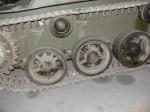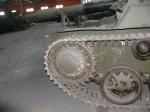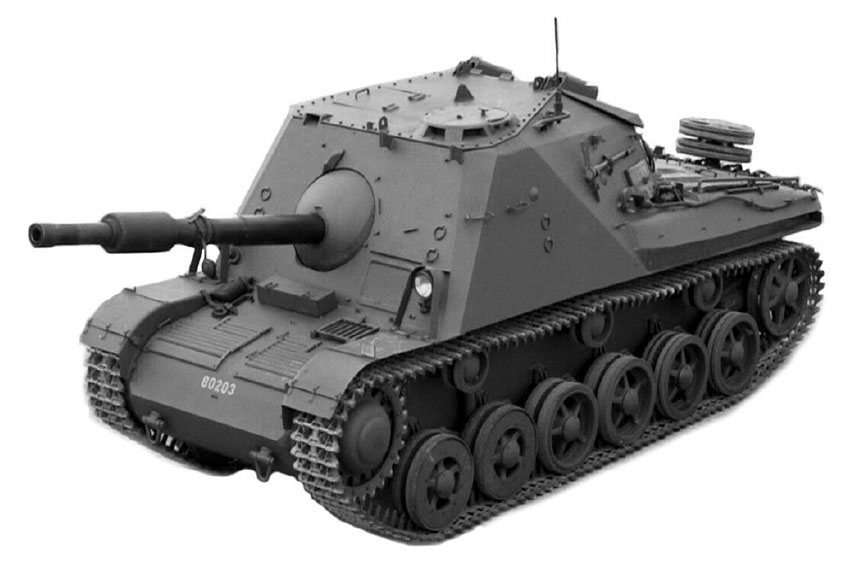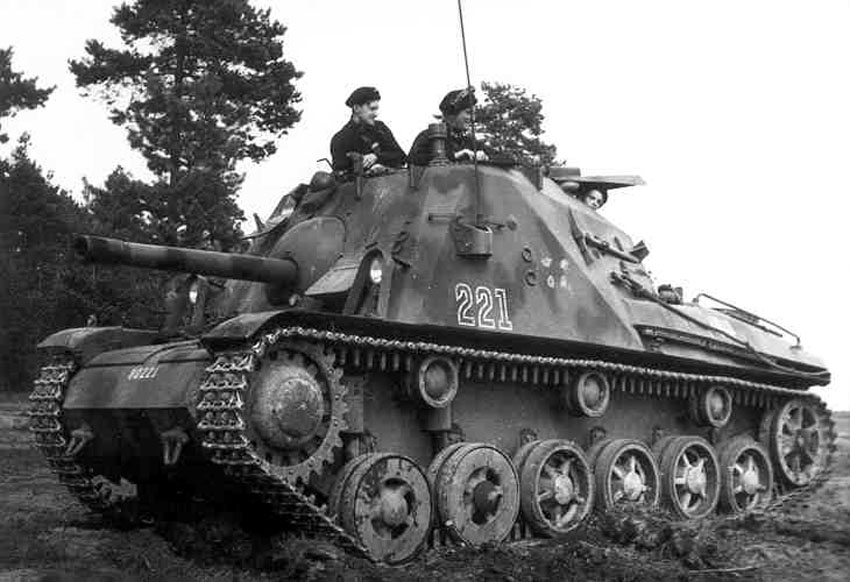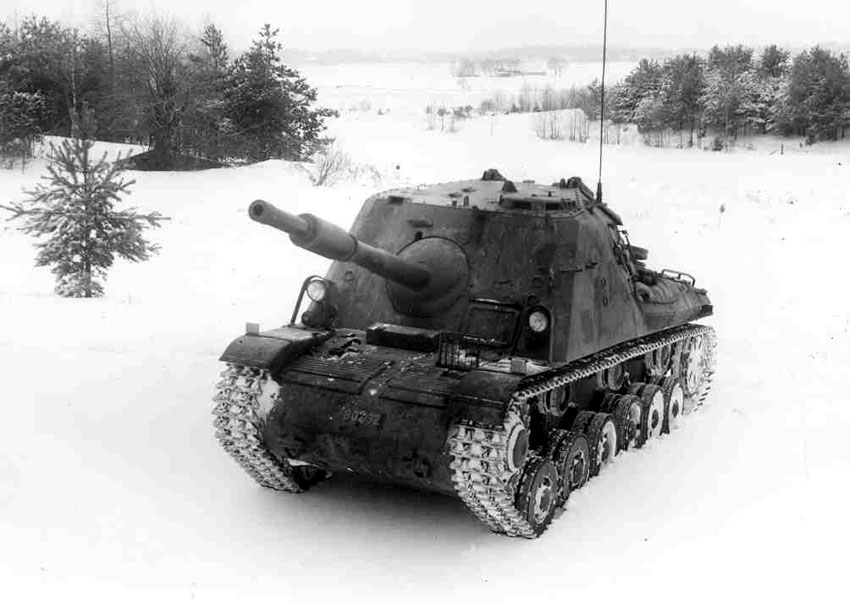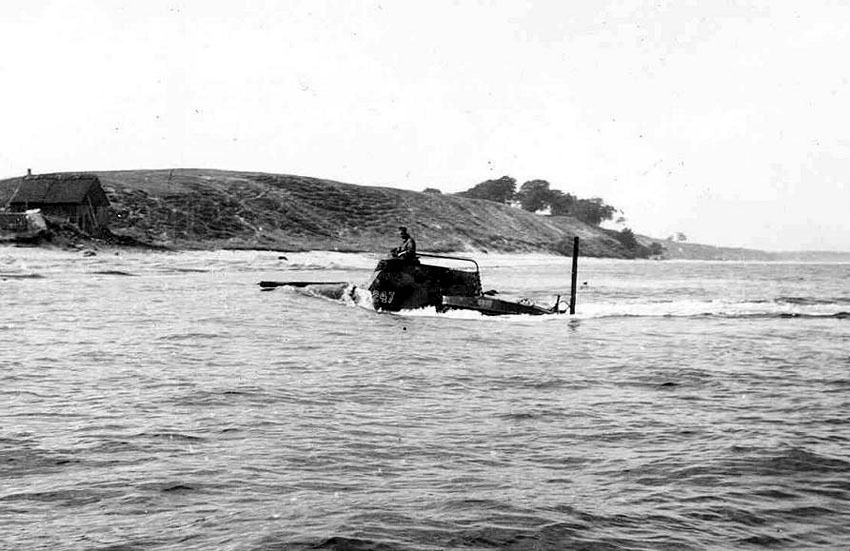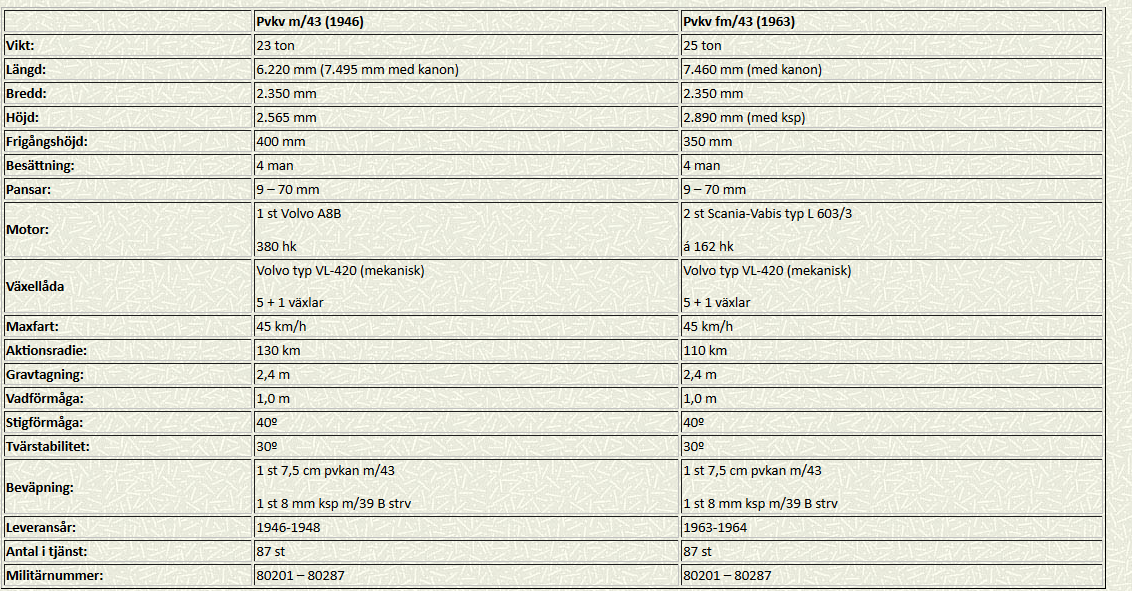Pansarvarnskanonvagn m43 Saumur
English Translation
Historique Voir ICI
History Click HERE
One of the novelties in the new armored brigade w / 43 were band-armored companies directly under the brigade boss. The idea was that this would make it possible for a heavy and mobile armored weapon to provide reinforcement to tanks according to German model. In order to fight the increasingly heavily armored wreckers on a longer distance, a vehicle with a larger cannon and a longer electric pipe was required for higher output speeds. The choice was based on the construction of the new armored gun carriage on the chassis of Strv m / 42 fitted with a fixed superstructure.
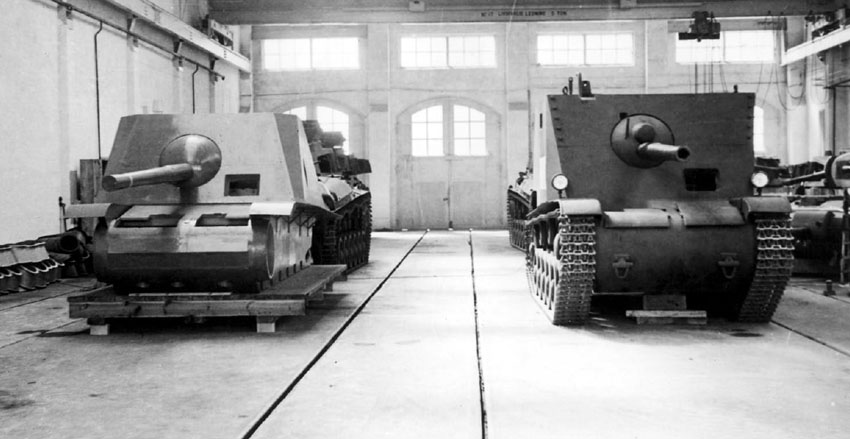 |
The trolley w / 42 was fitted with a moving tower armed with a shorter 7.5 cm cannon L / 28. This proved to be too clumsy to work against contemporary tanks of the latest cut. By using a further developed variant of the longer 7.5 cm air wrench w / 36 with the relative fire pipe length (L) 50.5 calibers, the output speed could be increased from 590 m / s to 810-890 m / s - this despite a slightly heavier armor projectile of 6-6,7 kg (which gave further increased motion energy). The disadvantage was that the fixed storage of the gun gave a limited field of field (+ 15º).
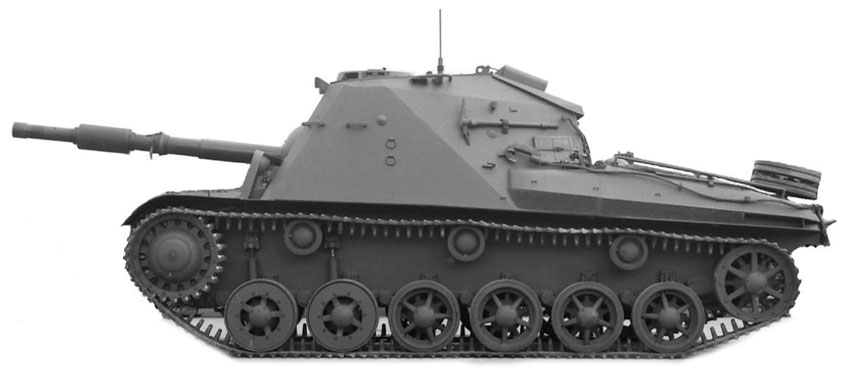 |
Order was added in 1942 at Landsverk for the production of 87 Pansarvärnskanonvagns m / 43 based on the Strv m / 42 EH chassis with Volvo A8B, but equipped with a mechanical gearbox that required new development. The larger cannon had made the wagon furnace, which had reinforced the two front wheel bearings (when they later ended as spare parts, they were replaced by standard wheels). In total, 56 grenades with good armor-breaking ability could be carried on the wagon. The crew was made up of four men. The armor guard was relatively good (frontal equivalent to ~ 80 mm armored steel), but in order to keep the weight down - Pvkv m / 43 was initially 23 tonnes - the fixed superstructure had no ceiling.
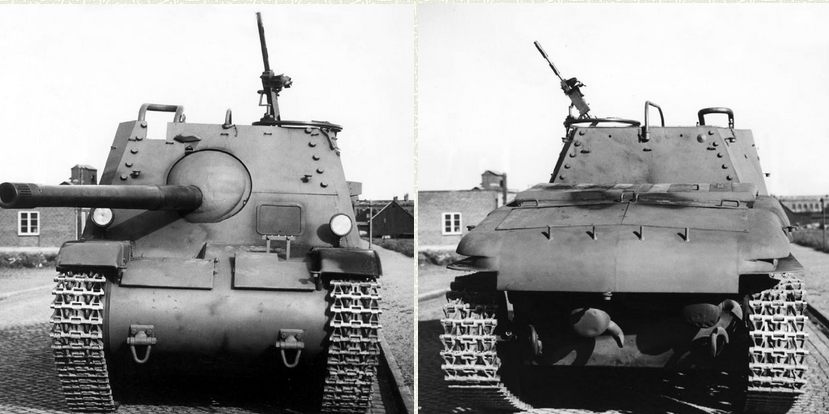 |
By 1944, when deliveries of series cars had to commence, there was only one prototype in front. There were mainly delays in the development of the new mechanical gearbox, which meant that deliveries could only be completed in 1946-1948. Thus, Pvkv w / 43 became the combat vehicle in Sweden who experienced the biggest delay during World War II.
In the mid-50s (1954), the Army Administration provided all Pvkv m / 43 with a panic attack over the open battle area. In addition to significantly improving the protection of the crew against pomegranates, the crew members also improved the ability to stay dry and warm - previously a slope had been closed by means of tarpaulin. Other modifications introduced during this period were that the fire pipe was fitted with a gun gas injector and received a transport support - previously the fire pipe had been pushed in during march.
Pvkv m / 43 was a well-functioning wagon, although Volvo's engine was pulled with frequent problems. However, the mechanical gearbox had such high reliability that it also became the natural choice when all subdimensional electromagnetic gearboxes in the Strv m / 42 TM were to be replaced.
Until the acquisition of the Centurion Tanks in 1953, the Pansarvärnskanonvagn was the only Swedish armored weapon that was able to beat the most common enemy tanks. This increased the interest in armored gun carriages and caused the KAF to initiate studies after the end of the war in order to investigate the possibilities of providing older tanks with coarser arms. Four different trolleys were developed - Pvkv II and III based on the Strv m / 41 chassis equipped with 7.5 cm air gun gun w / 36 and 57 mm armored gun w / 43, and Pvkv IV A and B based on Strv m / 40 chassis with corresponding armament options. However, the project was lowered as no versions were considered appropriate to proceed.
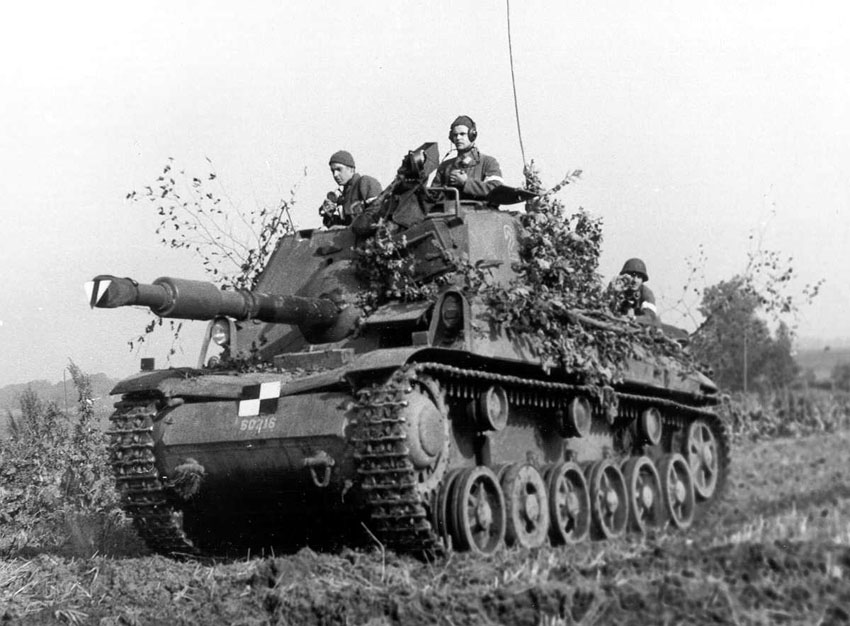 |
Bofors also developed at the same time and on his own initiative a armored gun trailer equipped with a 12 cm automatic cannon. A prototype was developed, but despite the innovative solution, the powerful weapon and the small weight of 20 tons - significantly lower than that of Pvkv m / 43 - the vehicle encountered no response either in Sweden or internationally.
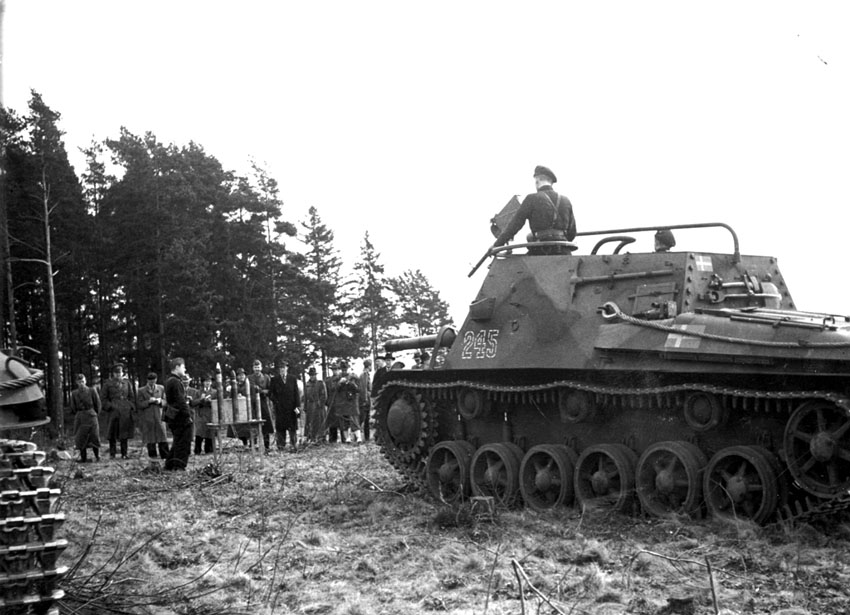 |
In the new armored brigade according to org 58, the armored gun carriages had expired. Instead, they were organized into seven Kårbandspansarvärnskompanier with 11 Pvkv m / 43 and 4 KP cars each. The idea was that, if necessary, these companies would be subjected to the infantry riots in mainly southern Sweden. In connection with the rebuilding of Strv m / 41 SII to Pbv 301 and Strv m / 40K, the 1957 war organization expired and their engines were available for use instead in Pvkv m / 43. This made it possible to replace the problematic A8B engine with the same type of engine packet that was found in Sav m / 43, Lvkv m / 43, Strv m / 42 TH and Strv m / 42 TV (Strv 74), that is two engines from Scania-Vabis type L603. An order was placed in December 1959 at Landsverk on the design and manufacture of three prototypes. They were delivered a year later, after which they underwent PC testing. The result became a considerably more reliable trailer, though with slightly lower engine power (325 hp instead of 380 hp). Rebuilding of remaining wagons was ordered in late 1961, which were then delivered in 1963-1964.
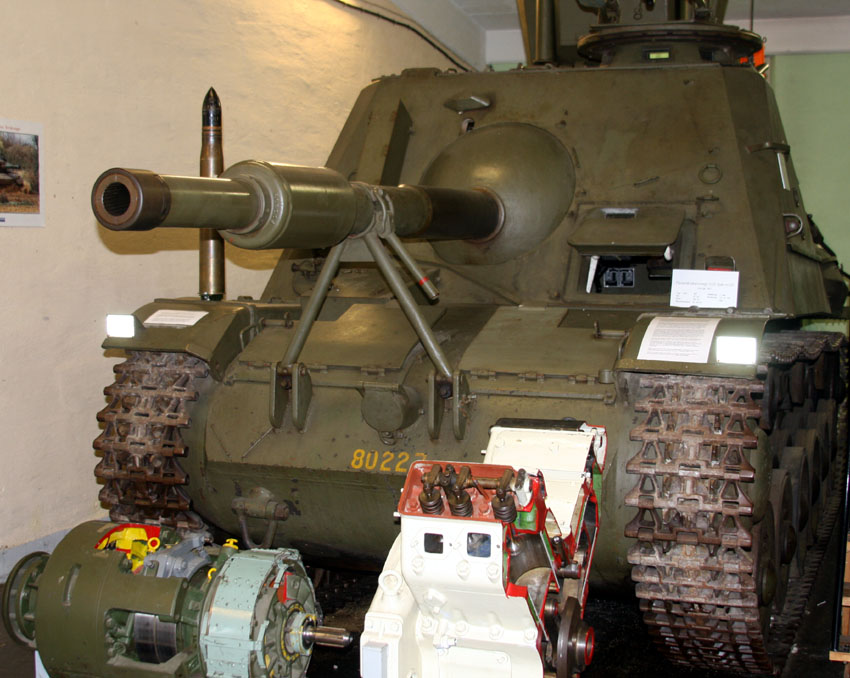 |
Pvkv m / 43 joined the organization in 1970. The canons continued to live as they were placed along the coast as part of our invasion defense - a task they remained until 1995 when they were assembled. A Pvkv m / 43 has been viewed in the Pansar Museum in Axvall and it will continue to live in the new Defense Vehicle Museum Arsenalen in Strängnäs.






.JPG)
.JPG)
.JPG)
.JPG)
.JPG)
.JPG)
.JPG)
.JPG)
.JPG)
.JPG)
.JPG)
.JPG)
